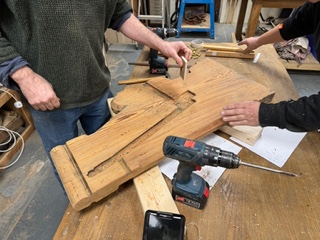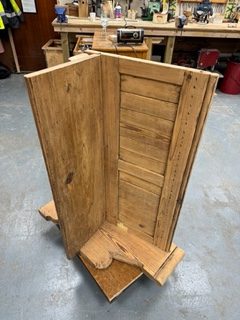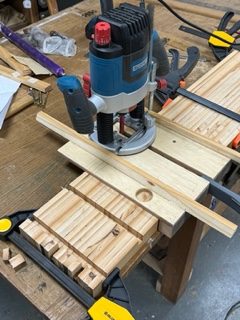
We have some redundant pews from a local church dating from 1818. Being about 20’ in length these pieces of ecclesiastical furniture are too long for domestic use. To give them a new life we’ve been cutting them to shorter lengths to make 2 seater benches. They will be for sale in our shop. They are made from pitch pine which grows in North America. As we work on them we can see that they had a considerable amount of hand work on them whilst being constructed.

The joinery is very traditional as one might expect for a piece of furniture of this age. Taking apart and reassembling these pews reveals typical joinery of the Georgian era.

The pews have been hand stripped of their historic varnish and refinished with boiled linseed oil. The photo shows one of our trainees applying the finish.



And finally one of our trainees has been repairing and refurbishing a G Plan Gold label chest of drawers. The drawer runners that are inside the carcass needed re-gluing. For successful gluing pressure needed to be applied to the runners, however conventional clamps (certainly the ones we have) do not reach. To solve this we’ve cut some narrow strips of wood that are slightly longer than the width between the runners. When these strips are flexed and released into place they provide excellent clamping pressure. In olden days this technique was used to put pressure on very large pieces of furniture including harpsichord and piano cases.


Your items have been added to your basket.
Your items have been added to your basket.